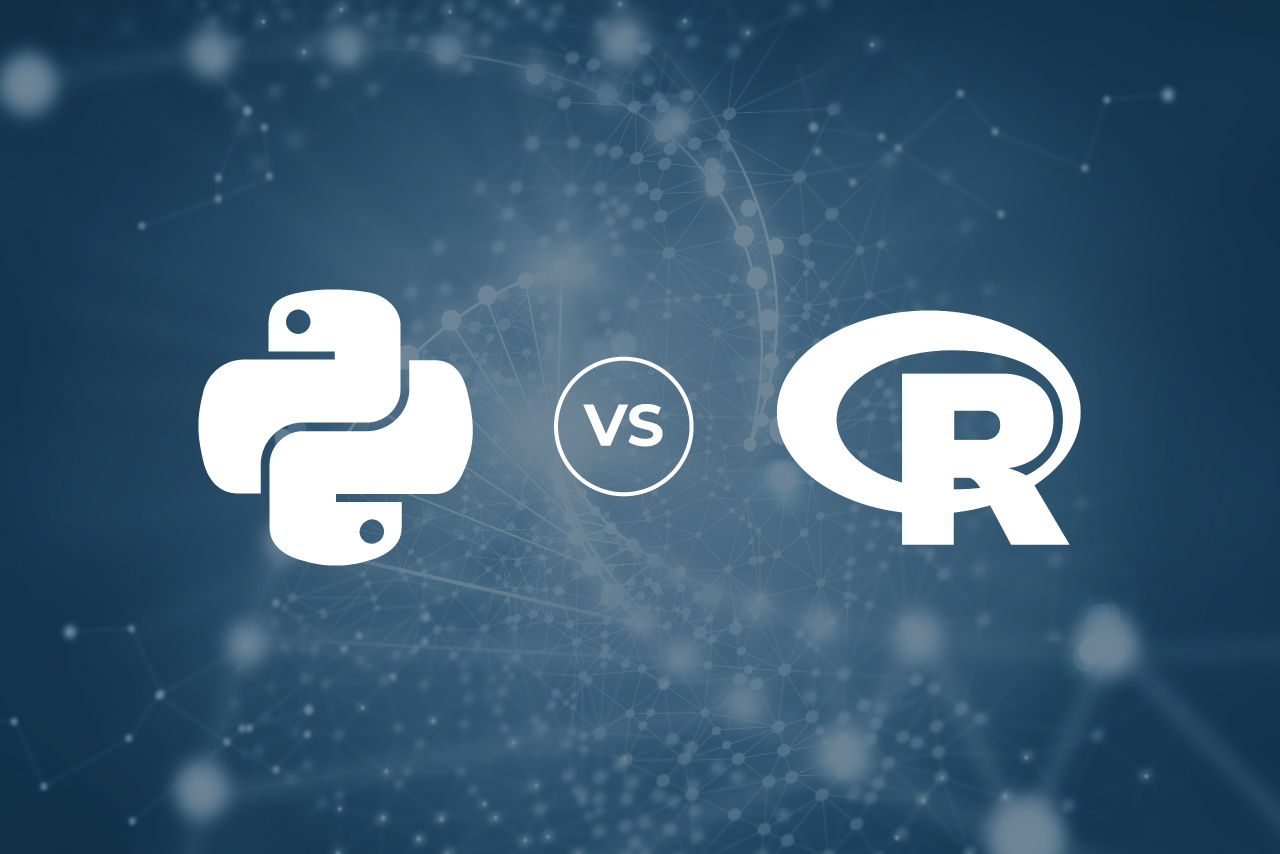The average salary for a data scientist is $117,345 per annum in the US, according to Glassdoor. In addition, LinkedIn’s 2018 US Emerging Jobs Report states that there are currently more than 6000 data scientist job openings and it’s the 7th most in-demand job with a growth rate of five times above the average. If you want to learn data science, there are two programming languages you should consider: Python or R, but which one should you choose?
Python vs R: what is the difference?
Both Python and R are open-source languages with large communities developed in the early 1990s. Python, however, is a more general-purpose language with a readable syntax. In fact, it’s one of the first languages newbie developers are encouraged to learn, because it reads similarly to English, which means it removes a lot of syntax-learning stress from coding beginners. It’s also widely used in data mining and analysis, scientific computing and machine learning. It contains powerful statistical and numerical packages for data analysis, such as PyBrain, NumPy and MySQL.
R was built by statisticians and academics, but can pretty much do the same tasks as Python. Both languages are capable of pulling large amounts of data to run repeated automated analyses to produce data visualisations, such as maps and charts. However, the learning curve for R is more difficult, at least initially. But these factors aside, if you want to learn data science which language is more popular and has better job opportunities?
Which language is more popular?
According to the TIOBE index, which looks at the popularity of various programming languages, Python is the 3rd most popular language in February 2019 (up from 4th place in February 2018). It’s way ahead of R, which sits in 15th place (down from 13th in February 2018). It’s also the world’s fastest-growing programming language.
A potential reason for this is that Python isn’t only used for data science. It’s a highly versatile language with many uses. Here are some of the incredible things you can do with Python:
- Automate the boring stuff
- Build web applications and websites from scratch
- Take advantage of micro frameworks like Flask and Bottle
- Develop GUI (Graphical User Interface) applications
- Do scientific and numeric computing
- Automate your browser to do social media posts
- Make robotics possible
Python vs R: job demand
Data science job listings, according to Glassdoor, tend to include Python, R and SQL as their top three skills. However, when it comes to Python vs R, there is greater job demand for Python. A 2018 Cloud Academy report, which analysed data engineer job descriptions to see which technologies were in highest demand from companies, revealed far less demand for R compared to those proficient in Python. “Nearly 66% of data engineer job postings mentioned Python, compared to just 18% of postings that mentioned R,” states TechRepublic, reporting on these findings.
To conclude, the high demand for data scientists seems self-evident if you consider that almost all companies are in a position to collect large amounts of data. Employees with specific skills to analyse this data for business insights are therefore crucially needed, though Python seems more desirable than R. The Cloud Academy report stated the following: “Python is known to be an intuitive language that’s used across multiple domains in computer science. It’s easy to work with, and the data science community has put the work in to create the plumbing it needs to solve complex computational problems. It could also be that more companies are moving data projects and products into production. R is not a general purpose programming language like Python.”
If you want to learn data science in 2019 and enter this lucrative and stimulating field, consider signing up for HyperionDev’s online Data Science or Software Engineering course – they both include Python. You can also trial one of these courses for free.


